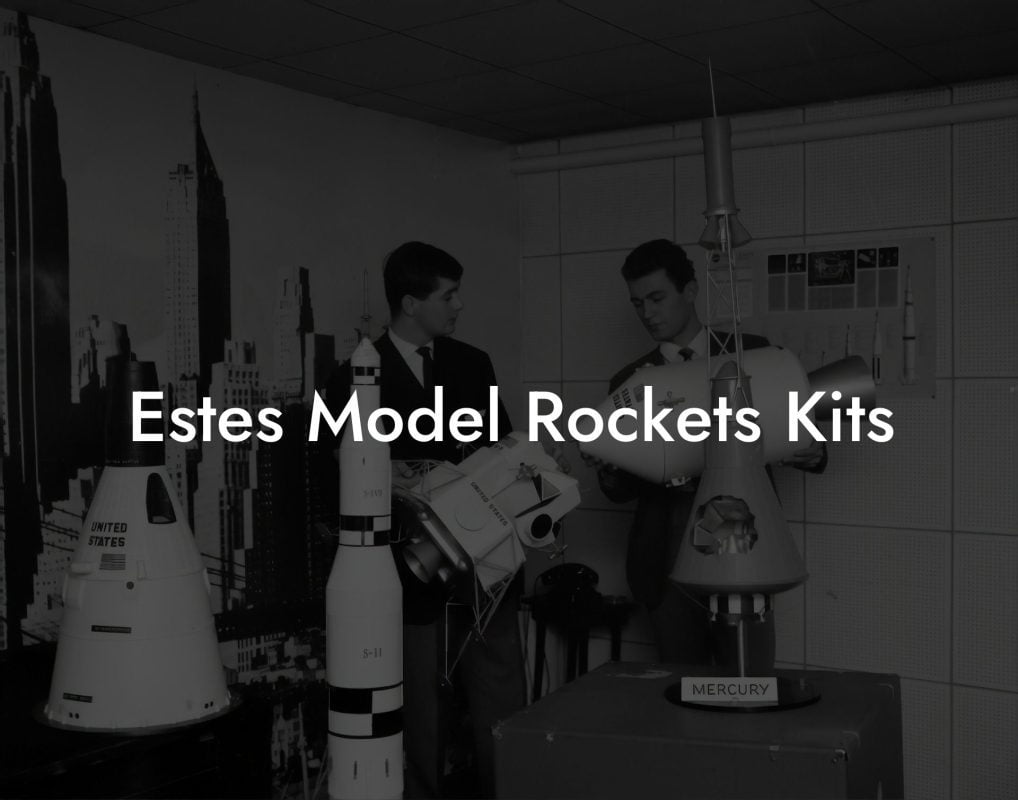Imagine soaring through the skies, leaving a trail of excitement and wonder in your wake. Welcome to the world of model rockets, where the thrill of launch meets the rush of innovation. But before you blast off, it's essential to prioritize safety – for yourself, your friends, and your community. In this comprehensive guide, we'll explore the dos and don'ts of model rocket safety, ensuring that your hobby remains a fun and responsible adventure.
Quick Links to Useful Sections
The Importance of Safety in Model Rocketry
Model rockets can reach incredible speeds and altitudes, making safety a top priority. A single misstep can lead to injuries, property damage, or even environmental harm. By understanding the risks and taking proactive measures, you'll not only protect yourself but also uphold the reputation of the model rocketry community.
Safety is not just about avoiding accidents; it's also about respecting the environment and the people around you. As a responsible model rocket enthusiast, you have a role to play in promoting a culture of safety and sustainability.
Pre-Launch Safety Checks
Before launching your model rocket, perform a series of safety checks to ensure a trouble-free flight:
- Inspect the rocket and launchpad: Check for any damage, wear, or tear on the rocket and launchpad. Make sure all components are securely attached and functioning properly.
- Verify the weather conditions: Avoid launching during strong winds, thunderstorms, or other hazardous weather conditions that could affect the rocket's flight or recovery.
- Choose a safe launch site: Select a launch site with a clear, open area, away from people, animals, and flammable materials.
- Use protective gear: Wear safety glasses, a helmet, and closed-toe shoes to protect yourself from debris or accidental launches.
- Follow launch protocols: Establish a standardized launch procedure, including a countdown and a clear understanding of who is responsible for launching the rocket.
By following these pre-launch safety checks, you'll minimize the risk of accidents and ensure a successful, enjoyable flight.
Looking For The Best Model Rocket Kits? You'll Love These:
Safety During Launch and Recovery
During the launch and recovery phases, remain vigilant and follow these safety guidelines:
- Maintain a safe distance: Keep a safe distance from the launchpad and the rocket during launch and recovery to avoid injury from debris or accidental explosions.
- Track the rocket's flight: Monitor the rocket's flight path to ensure it doesn't pose a risk to people, animals, or property.
- Use a recovery system: Implement a reliable recovery system, such as a parachute or streamer, to slow the rocket's descent and prevent damage or injury.
- Avoid overflight: Never launch a model rocket over people, animals, or populated areas, as it can cause harm or damage.
By being mindful of these safety considerations during launch and recovery, you'll ensure a safe and successful experience for everyone involved.
Post-Launch Safety Procedures
After the launch, follow these post-launch safety procedures to prevent accidents and maintain a safe environment:
- Conduct a post-launch inspection: Inspect the rocket and launchpad for any damage or wear, and perform necessary repairs or maintenance.
- Dispose of hazardous materials: Properly dispose of any hazardous materials, such as batteries or fuel, to prevent environmental harm or accidents.
- Store rockets and equipment safely: Store rockets and equipment in a secure, dry location, away from flammable materials and out of reach of children or pets.
By following these post-launch safety procedures, you'll ensure a safe and responsible conclusion to your model rocketry experience.
Resources and Community Support: Your Next Steps
As a model rocket enthusiast, you're part of a vibrant community that shares your passion for innovation and adventure. To further enhance your safety knowledge and skills, explore the following resources and community support:
- National Model Rocketry Organizations: Join national organizations, such as the National Association of Rocketry (NAR) or the Tripoli Rocketry Association (TRA), which provide safety guidelines, training, and community support.
- Online Forums and Communities: Participate in online forums and social media groups dedicated to model rocketry, where you can share experiences, ask questions, and learn from others.
- Local Clubs and Meetups: Connect with local model rocketry clubs and meetups, which offer hands-on training, mentorship, and opportunities to learn from experienced enthusiasts.
By tapping into these resources and community support, you'll stay up-to-date with the latest safety guidelines, best practices, and innovations in model rocketry.
Frequently Asked Questions: Model Rocket Safety
Here are some frequently asked questions about model rocket safety, along with expert answers to help you navigate the world of model rocketry:
1. What is the most critical safety aspect of model rocketry?
The most critical safety aspect is ensuring a safe launch site, away from people, animals, and flammable materials.
2. How can I prevent accidental launches?
Always follow a standardized launch procedure, use a launch key or safety switch, and ensure that only authorized individuals are near the launchpad.
3. What safety gear should I wear during launches?
Wear safety glasses, a helmet, and closed-toe shoes to protect yourself from debris or accidental launches.
4. How can I ensure a safe recovery?
Implement a reliable recovery system, such as a parachute or streamer, and track the rocket's flight path to ensure a safe and controlled descent.
5. What should I do in case of an accident or injury?
Provide first aid if necessary, report the incident to the relevant authorities, and conduct a thorough investigation to prevent similar accidents in the future.
Looking For The Best Model Rocket Kits? You'll Love These:
Useful Interruption: Dive deeper into the world of Model Rockets with our most popular sections. If there is anything you think is missing or anything you would love for us to write about, just give us a shout.
- Getting Started & Basics With Model Rockets
- Model Rocket Design, Build & Customization
- Model Rocket Propulsion & Engine Technology
- Model Rocket Launch Techniques & Recovery
- Model Rocket Advanced Rocketry & Innovations
- Model Rocket DIY and Customization
- Model Rocket Equipment Reviews & Digital Tools
- Community, Competitions & Education
- Model Rocket Troubleshooting & FAQs
- Model Rocket Bonus/Seasonal & Niche Topics
A group of model rocket enthusiasts gathered at a field for their weekly launch event. Among them was Dave, a seasoned builder known for pushing the limits of hobby rocketry. This time, he had outdone himself.
“Ladies and gentlemen,” Dave announced, dramatically pulling a cloth off his latest creation, “I present to you: The Kraken!”
The crowd gasped. This wasn’t just a model rocket, it was a monster. The thing stood 8 feet tall, had six clustered engines, and was covered in enough duct tape to qualify as a classified aerospace project.
“Dave,” muttered Steve, the cautious safety officer, “Have you, uh… done the math on this?”
“Math?” Dave scoffed. “I built it in my garage at 3 a.m. with parts from eBay. This is an art piece, Steve.”
The countdown began.
5…
4…
3…
2…
1…
The engines ignited with a BOOM, and The Kraken shot up… kind of. It immediately did a violent barrel roll, narrowly missing the spectators before skyrocketing at an angle that could only be described as “legally questionable.”
The crowd collectively ducked as The Kraken flew straight over the adjacent cornfield, where Old Man Jenkins, the grumpiest farmer in town, was minding his business.
KABOOM!
The rocket disappeared behind the barn. A moment later, a flaming piece of Estes igniter wire landed at Steve’s feet. The silence was deafening.
And then, an unmistakable sound echoed across the field.
Jenkins’ shotgun being cocked.
“DAVE!!!” Steve shouted. “RUN.”
And that was the day Dave invented the first-ever biologically powered rocket booster: pure adrenaline.
To this day, nobody knows where The Kraken landed, but legend has it, it still haunts the skies, terrifying unsuspecting drones and low-flying birds.















